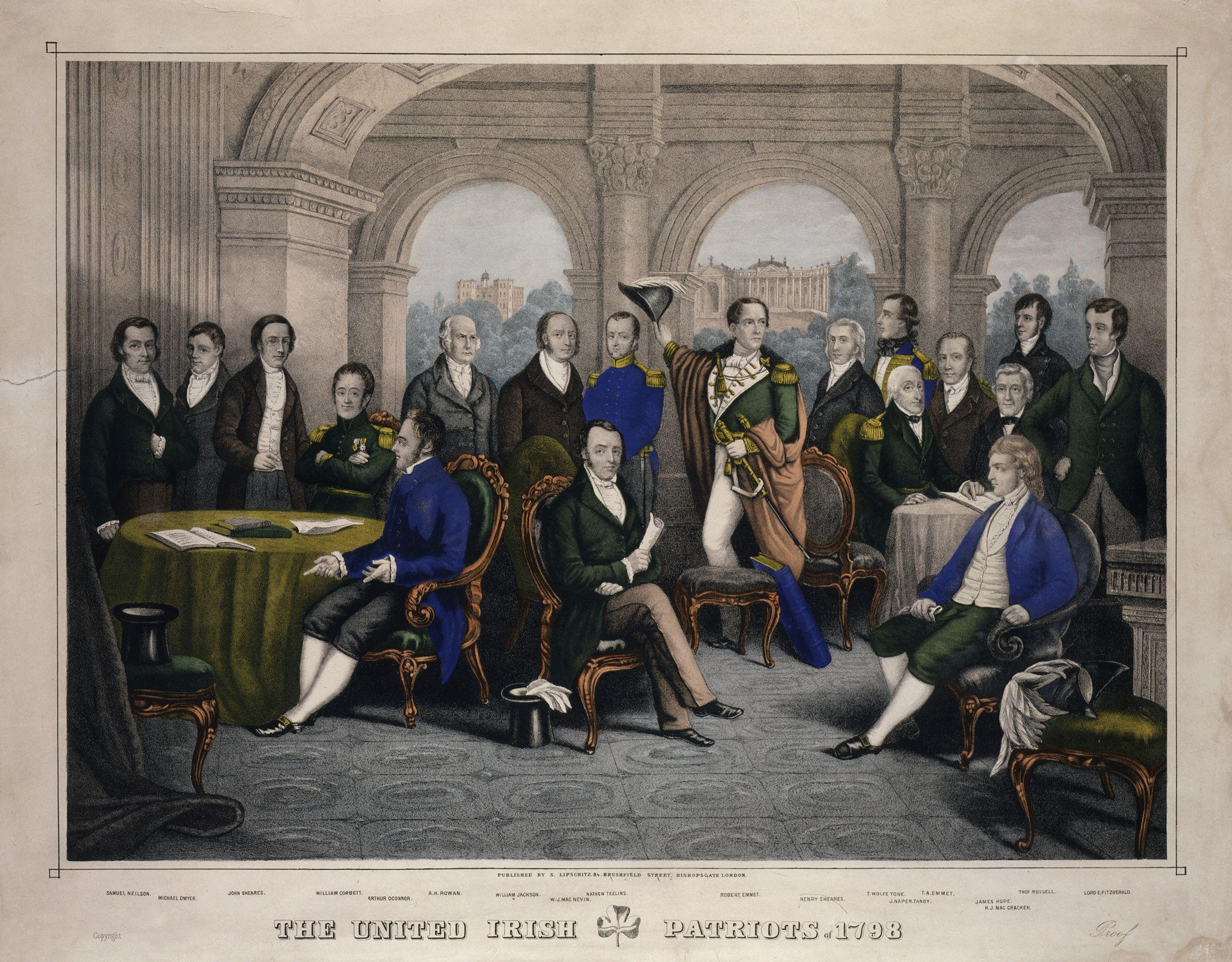This article was written by Craig A. Landy, a partner at NYC firm Peckar & Abramson, PC. Mr. Landy talks more extensively about this interesting and currently relevant topic in Issue 11 of The Historical Society of the New York Courts’ Judicial Notice, a journal of articles of historical substance and scholarship that uniquely focuses on New York legal history. This latest issue of Judicial Notice is ready to be shipped out and is only available to Society Members. Don’t miss out and become a member by clicking on the following link: Join the Society.
Photo: The United Irish Patriots of 1798. Thomas Addis Emmet is the fourth figure from right. Unknown artist, colored lithograph, 1798 or after. © National Portrait Gallery, London
Irish republicanism was born in the 1790s when the Society of United Irishmen sought French military support to overthrow English rule in Ireland. When that movement failed, its former leaders were imprisoned, banished and later scattered in exile across Europe and America, many landing in New York City. Their arrival sparked a nativist reaction, especially among members of the Federalist Party, who tried to limit the political mischief that they feared deported Irish revolutionaries could get into in New York.
Chief Justice James Kent, one of the few Federalists on the New York Supreme Court in the early 1800’s, branded as “Jacobins” all those who followed the French and led the effort to prevent former United Irishmen barristers from practicing law in New York, at least until they became U.S. citizens (a wait of up to five years).
Two of the more notable Irish immigrant lawyers to reach New York at the dawn of the nineteenth century were targets of Chief Justice Kent’s exclusionary efforts, Thomas Addis Emmet and William Sampson. Despite those efforts, Emmet was the first non-citizen to be admitted to the New York Bar, while Sampson was the second and last non-naturalized immigrant to be allowed in before the door to the practice of law in New York was slammed shut to non-citizens until the United States Supreme Court lifted the blanket prohibition in 1973.
Once admitted, both Emmet and Sampson went on to distinguished careers at the New York Bar. Emmet served as Attorney General of the State of New York and counsel in Gibbons v. Ogden in the U.S. Supreme Court. Sampson has been hailed as the first career human rights lawyer in America.
Today, courts and legislatures across the country continue to struggle over whether undocumented immigrants are eligible for admission to the bar.
The forthcoming article “Jacobin Winds: Chief Justice James Kent and the Origins of the Citizenship Prerequisite for Admission to the New York Bar” offers an historical backdrop for this compelling debate.

